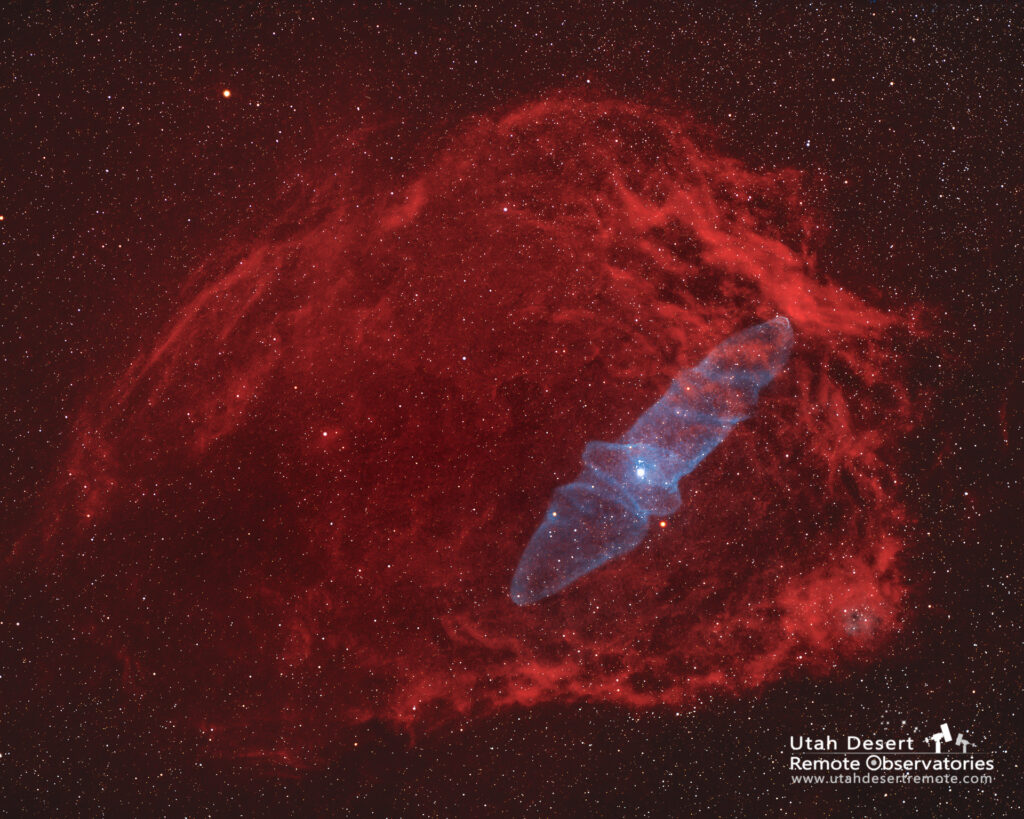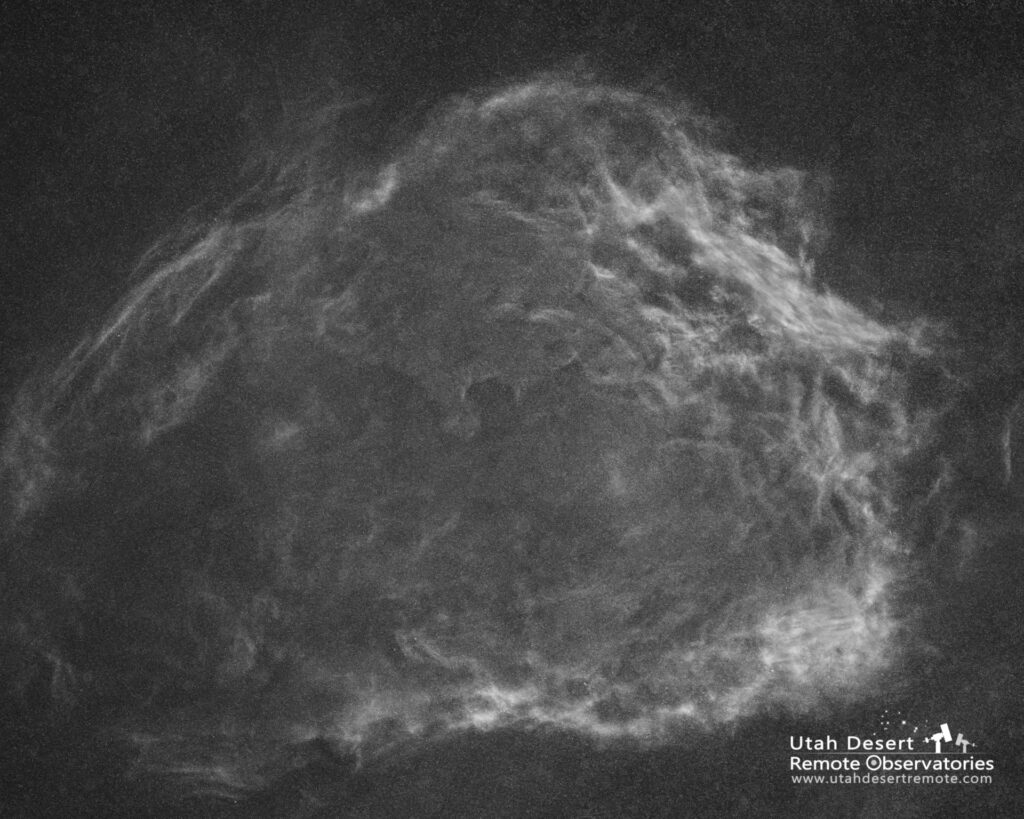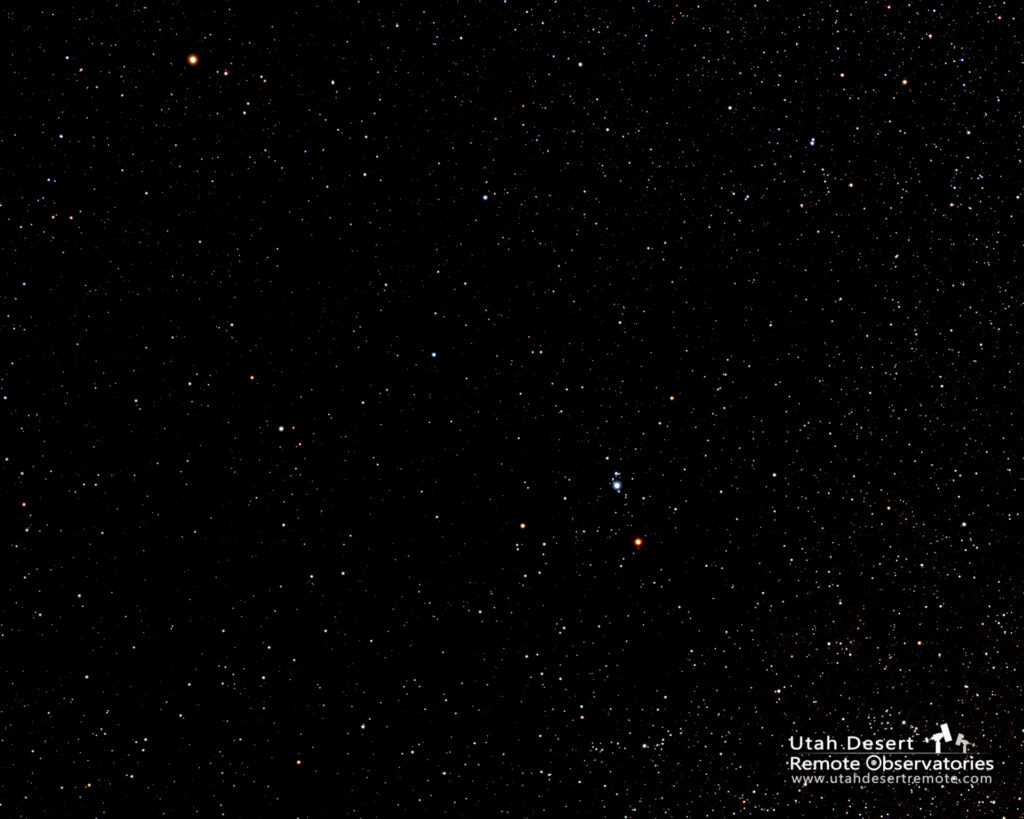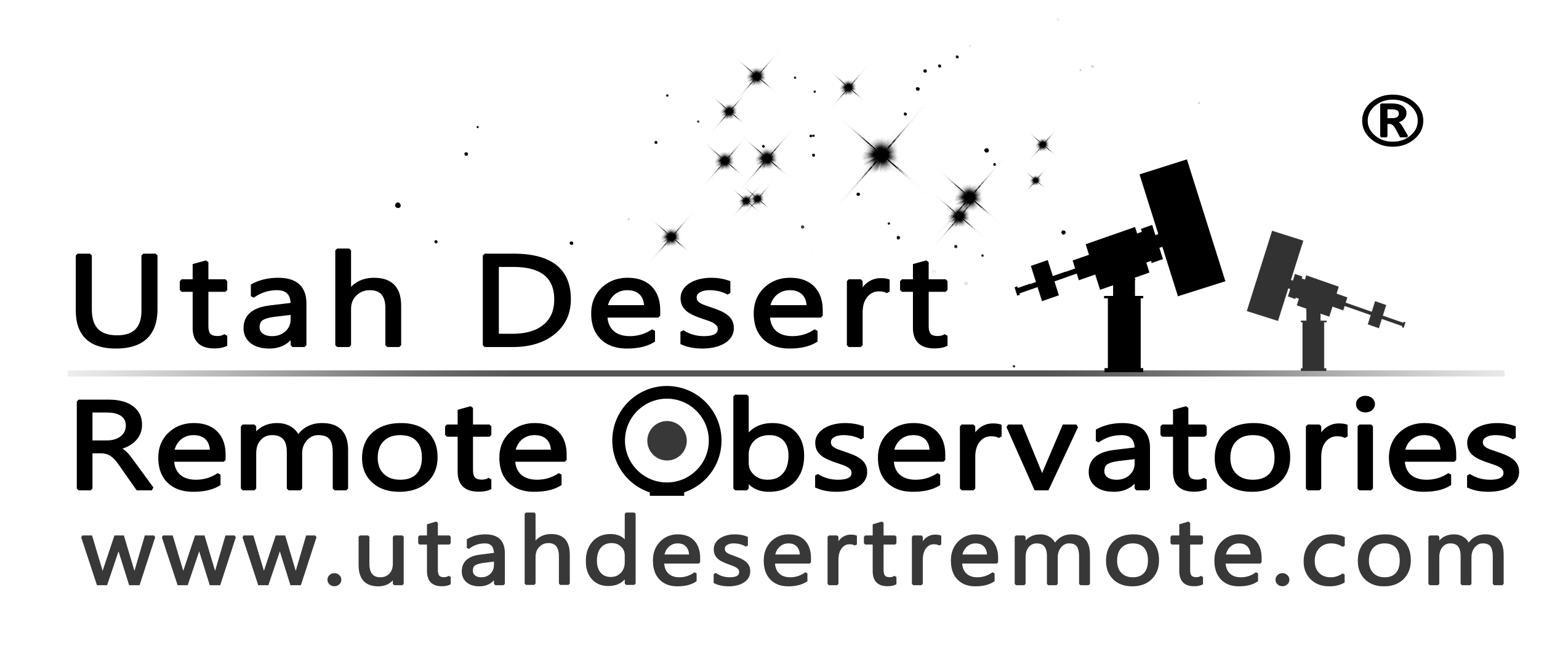Very few astronomy images are simply taken, rather they are assembled from an assortment of different images (or data) that may have been collected over a period of time. It’s not unusual to combine data from different telescopes or cameras to find the best blend of information to show the target.

Consider this image of the Flying Bat Nebula (the large cloud of red hydrogen gas) and the Giant Squid Nebula (the smaller blue oxygen feature). This was captured over a series of a couple nights using two different cameras under the dark sky provided by Utah Desert Remote Observatories. All data was capture using the Takahashi FSQ106 refractor telescope on a SkyWatcher EQ6-R Pro mount.

First, and easiest to capture is the large hydrogen cloud of the Flying Bat Nebula. This was captured in a series of nine 20 minute exposures using a 12nm hydrogen-alpha filter on an ASI6200MM Pro monochrome camera. A standard part of my workflow is to use StarNet++ to remove the stars so that I can focus on bringing out the structure of the nebula without affecting the stars. However I do keep both the star and starless layers together so that all of the layers can be carefully aligned using the stars.
The blue oxygen region is much more faint and difficult to capture. This image combines 22 20 minute frames using an Oxygen III filter to bring out the faint features of the Giant Squid Nebula. Again it was processed using StarNet++ to remove the stars and a series of curves, levels and masks were applied in Photoshop to further highlight the squid.


The last piece is the stars themselves. In this case I photographed the star field using an ASI6200MC Pro color camera that has the same pixel proportions as the monochrome camera to ensure a good match. This allowed me to capture the natural colors of the stars which I could then combine with the red and blue narrowband regions when creating the final image.
